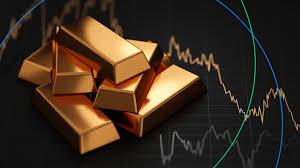Decoding One Gram Gold Price: Insights, Trends & Strategies
In the realm of precious metals, the price of one gram of gold holds immense importance for investors and enthusiasts alike. Understanding the myriad factors influencing its price dynamics, analyzing historical trends, and devising effective investment strategies are crucial for navigating the complex landscape of gold markets.
I. Introduction
A. Definition of one gram gold price

The term “one gram gold price” refers to the current market value of one gram of gold. It serves as a benchmark for investors and traders, reflecting the demand and supply dynamics of this precious metal.
B. Significance of tracking one gram gold prices
Monitoring one gram gold prices is vital for investors seeking to make informed decisions regarding buying, selling, or holding gold-based assets. It provides valuable insights into economic trends, geopolitical developments, and market sentiment.
C. Overview of factors influencing one gram gold prices
Several factors influence one gram gold prices, including economic indicators such as inflation rates and interest rates, geopolitical events, market sentiment, and supply and demand dynamics.
II. Factors Affecting One Gram Gold Prices
A. Economic indicators
Economic data releases, such as GDP growth and unemployment rates, can impact investor sentiment and influence one gram gold prices.
B. Geopolitical events
Geopolitical tensions, conflicts, and diplomatic developments can drive investors towards safe-haven assets like gold, leading to increases in its price.
C. Market sentiment
Investor perception of risk, market volatility, and speculative trading activity play a significant role in determining short-term fluctuations in one gram gold prices.
D. Supply and demand dynamics
Changes in demand for gold, particularly from industries like jewelry and technology, as well as fluctuations in gold production, can affect its price in the long term.
III. Historical Analysis of One Gram Gold Prices
A. Major events impacting gold prices
Historical events such as economic crises, geopolitical tensions, and changes in monetary policy have historically influenced one gram gold prices.
B. Long-term trends and patterns
Despite short-term fluctuations, gold has demonstrated long-term appreciation, making it an attractive investment option for many.
C. Short-term fluctuations
Factors like market speculation, currency movements, and geopolitical tensions can lead to short-term volatility in one gram gold prices.
IV. Factors Influencing One Gram Gold Price Today
A. Current economic conditions
Global economic indicators such as GDP growth, inflation rates, and central bank policies can impact one gram gold prices today.
B. Global geopolitical landscape
Geopolitical tensions, trade disputes, and diplomatic developments can influence investor sentiment and drive demand for safe-haven assets like gold.
C. Recent market sentiment
Investor sentiment, market speculation, and trading activity also influence one gram gold prices today, sometimes leading to sharp fluctuations in prices.
V. Strategies for Investing in One Gram Gold
A. Long-term investment strategies
Investors looking for stability and long-term growth may consider allocating a portion of their portfolio to one gram gold as a hedge against economic uncertainty and inflation.
B. Short-term trading strategies
Traders capitalize on short-term fluctuations in one gram gold prices through techniques such as day trading and swing trading, utilizing technical analysis tools and market indicators.
C. Diversification considerations
Diversifying investment portfolios with assets like one gram gold can help mitigate risk and improve overall portfolio performance, particularly during times of market volatility.
VI. Conclusion
Understanding the intricacies of one gram gold price fluctuations and implementing effective investment strategies are essential for investors seeking to capitalize on opportunities and protect their wealth in the ever-changing gold market landscape.
VII. FAQs
A. How is the price of one gram gold determined?
The price of one gram gold is determined by various factors, including global demand and supply dynamics, economic indicators, investor sentiment, and market speculation.
B. What role does inflation play in one gram gold prices?
Gold is often viewed as a hedge against inflation, as its value tends to increase during periods of rising prices and currency devaluation.
C. Is it better to invest in physical gold or gold ETFs?
The choice between investing in physical gold or gold ETFs depends on individual preferences, risk tolerance, and investment objectives. Physical gold offers tangible ownership, while gold ETFs provide liquidity and ease of trading.
D. What are the risks associated with investing in one gram gold?
Risks associated with investing in one gram gold include price volatility, geopolitical instability, regulatory changes, and currency fluctuations.
E. How can individuals track the price of one gram gold in real-time?
Individuals can track the price of one gram gold in real-time through financial news websites, dedicated trading platforms, and mobile applications that provide live price updates and market analysis.
PLEASE CONTACT US TO START YOUR GOLD INVESTMENT JOURNEY! CLICK HERE!!

